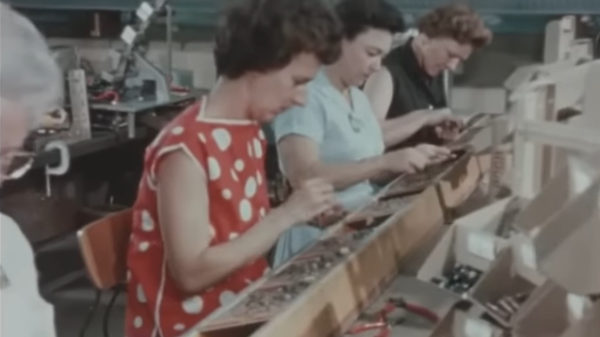If you’ve ever wondered where the term “banker’s hours” came from, look back to the booming post-war economy of 1950s America. That’s when banks were deluged with so many checks, each of which had to be reconciled by hand, that they had to shut their doors at 2:00 or 3:00 in the afternoon, just to have a hope of getting all the work done at a reasonable time. It was time-consuming, laborious, error-prone work that didn’t scale well, and something had to be done about it.
The short film below, “Manufacturing Competence,” details the building of ERMA, the Electronic Recording Machine, Accounting. ERMA was the result of years of R&D work, and by the early 1960s, General Electric was gearing up production at its new Phoenix, Arizona plant. The process goes from bare metal racks and proceeds through to manufacturing the many modules needed for these specialized machines, which were perhaps the first commercial use of computers outside of universities and the military.
The sheer number of workers involved is astonishing, especially in backplane assembly, with long lines of women wielding wire-wrapping guns and following punch-tape instructions for the point-to-point connections. PCB stuffing was equally labor-intensive, with women stuffing boards from a handful of seemingly random components. And the precision needed for some of the steps, like weaving the ferrite core memory, was breathtaking. We really enjoyed the bit where the tiny toroids were bounced into place with a vibrating jig.
The hybrid nature of ERMA, and the assembly methods needed to produce it, are what strike us most about this film. The backplanes were wire-wrapped, but the modules were wave-soldered PCBs. Component leads were automatically formed and trimmed, but inserted by hand. Assembly and testing were directed by punched tape, but results were assessed by eye. Even ERMA itself was prototyped with vacuum tubes, but switched to transistors for production. The transitional nature of electronics in the early 1960s is on full display here, and it offers an interesting perspective on how change in this field can be simultaneously rapid and glacial.
Continue reading “Retrotechtacular: Building The First Computers For Banking”












